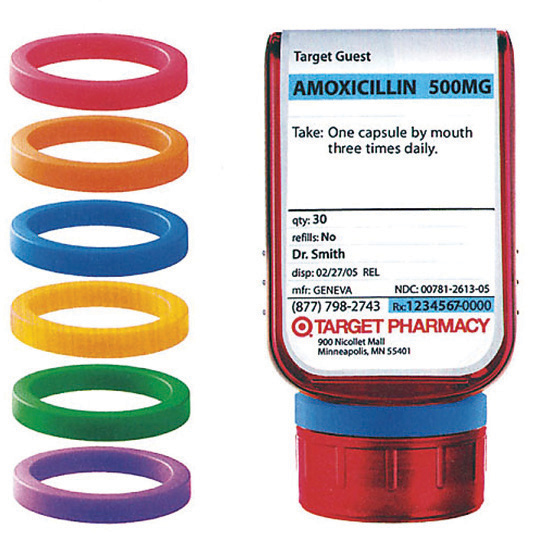Innovation in healthcare does not only have to be about the drugs or even the marketing channels. Instead, designers can have a real impact with some out-of-the box ideas.
When design suggests something that an organization cannot do, it is viewed as fantasy. Design is always about creating another world and being more innovative than we would otherwise. Design limits may occur because the organization lacks the ability to do it today, or because the market won’t allow or accept it. Yet, we know the way forward is usually not linear and creative leaps are necessary to construct a vision to drive new markets and new possibilities.
Possibilities open up when friction points are identified between what people do now and what they want or could do in the future. Unfortunately, those points of possibility are rarely offered up in market research reports. The now famous Target prescription bottle (pictured) is a classic example of a friction point identified around patient safety and dosing information that motivated a young designer to innovate a solution for her grandmother. Isn’t it interesting that other pharmacy companies have not followed this example to improve the standard, albeit inferior, prescription bottle?
Healthcare is a hot commercial market and it has caught the attention of many people who have the design skills to envision new solutions across a spectrum of friction points in the system. As we witnessed in the technology market, innovation can come from entrepreneurs of all shapes and sizes who are ready and willing to tackle challenges.
Consumers (aka patients) themselves are starting to impact healthcare in interesting ways. The innovation arena is opening up for the do-it-yourself inventor who wants to design new services in healthcare. For example, the next generation prescription bottle or Z-Pak is likely to be one that talks to the patient. Arduino produces very affordable microcontrollers for inventors to design computer-based interactivity into objects such as a prescription bottle, enabling it to send a tweet to the mobile phone of the patient or caregiver when a dose is missed. We are in for an interesting future where objects will communicate directly with us.
On the other end of the spectrum: The Pink Army Cooperative with a new model in drug treatment. They represent a biotech company structured as a co-op, whose goal is to change the approach to treatment in the cancer arena. The cooperative imagines a new way to develop personalized drug therapies that are 100% customized. After weighing the risks, if the individual proceeds with the therapy, they become a clinical trial of one and agree to share their data openly with the community of doctors, patients and even government regulators. Almost 600,000 Americans are expected to die of cancer in 2013. Working personalized cancer treatment into the existing healthcare system may resolve many of its inefficiencies and costs. Individuals championing new ways to reduce friction points in the system are experimenting with aggressive new models and possibilities.
The tyranny of healthcare innovation has been about big ideas and blockbusters, but will that trend be impacted or ultimately replaced, by smaller design ideas that can bring about big changes? It is time for businesses to unshackle innovation and get inquisitive about what is bubbling up in the sprawling healthcare marketplace.





